Probability of events
Probability is a type of ratio where we compare how many times an outcome can occur compared to all possible outcomes.
Probability=ThenumberofwantedoutcomesThenumberofpossibleoutcomes
Example
What is the probability to get a 6 when you roll a die?
A die has 6 sides, 1 side contain the number 6 that give us 1 wanted outcome in 6 possible outcomes.
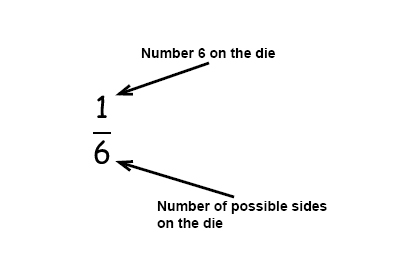
Independent events: Two events are independent when the outcome of the first event does not influence the outcome of the second event.
When we determine the probability of two independent events we multiply the probability of the first event by the probability of the second event.
Example
If one has three dice what is the probability of getting three 4s?
The probability of getting a 4 on one die is 1/6
The probability of getting 3 4s is:
Dependent events: Two events are dependent when the outcome of the first event influences the outcome of the second event. The probability of two dependent events is the product of the probability of X and the probability of Y AFTER X occurs.
Example
What is the probability for you to choose two red cards in a deck of cards?
A deck of cards has 26 black and 26 red cards. The probability of choosing a red card randomly is:
HERE A VIDEO OF EXPLANATIONS:
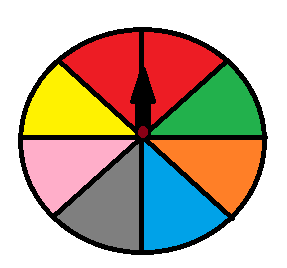
What is the probability that the wheel stops at red or pink?
P(red or pink)=P(red)+P(pink)
Example
What is the probability of drawing a black card or a ten in a deck of cards?
There are 4 tens in a deck of cards P(10) = 4/52
There are 26 black cards P(black) = 26/52
There are 2 black tens P(black and 10) = 2/52
Using the Fundamental Counting Principle to Determine the Sample Space
As we dive deeper into more complex probability problems, you may start wondering, "How can I figure out the total number of outcomes, also known as the sample space?"We will use a formula known as the fundamental counting principle to easily determine the total outcomes for a given problem. First we are going to take a look at how the fundamental counting principle was derived, by drawing a tree diagram.
Example 1
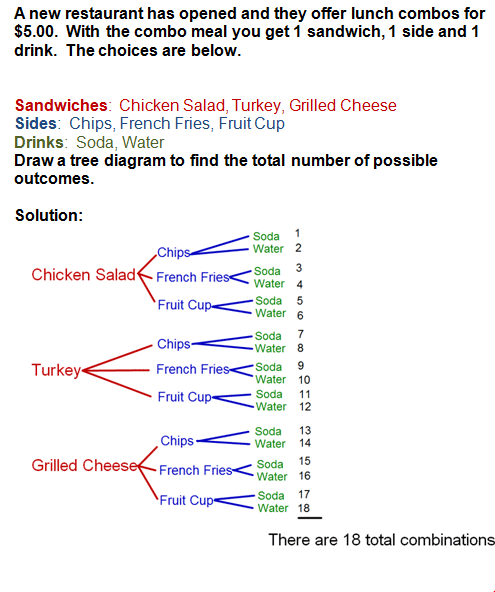
The fundamental counting principle will allow us to take the same information and find the total outcomes using a simple calculation. Take a look.
Example 1 (continued)
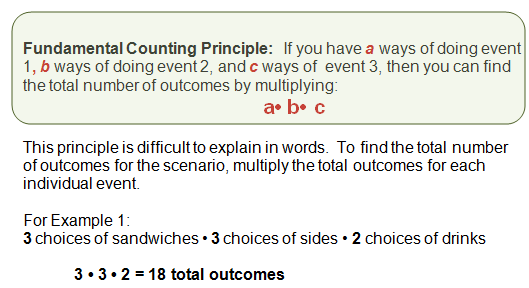
Let's take a look at another example.
Example 2
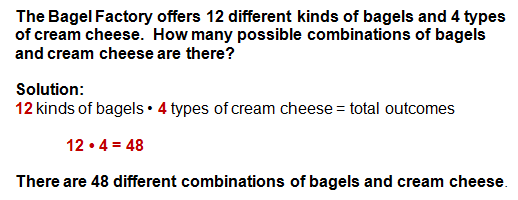
Let's look at one more example and see how probability comes into play.
Example 3
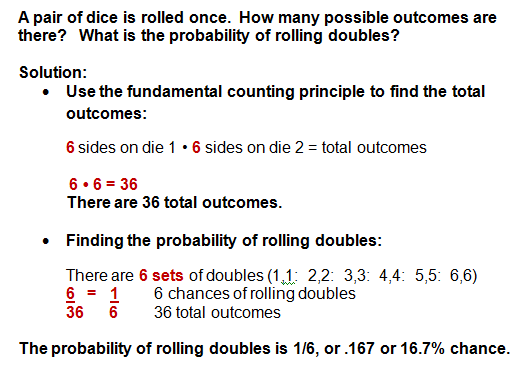

Practice Problem
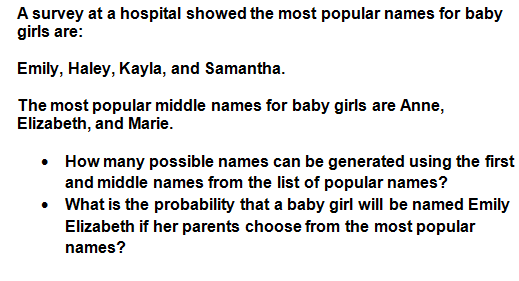
Answer Key
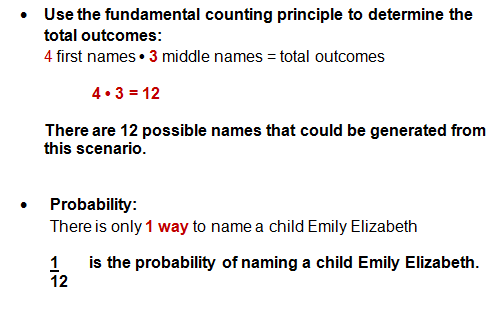
Although you may think that drawing the tree diagrams is fun, it's much easier to use the formula, isn't it? I hope you had fun - now it's time to move on.
- See more at: http://www.algebra-class.com/fundamental-counting-principle.html#sthash.4xx6tAUg.dpuf
No comments:
Post a Comment